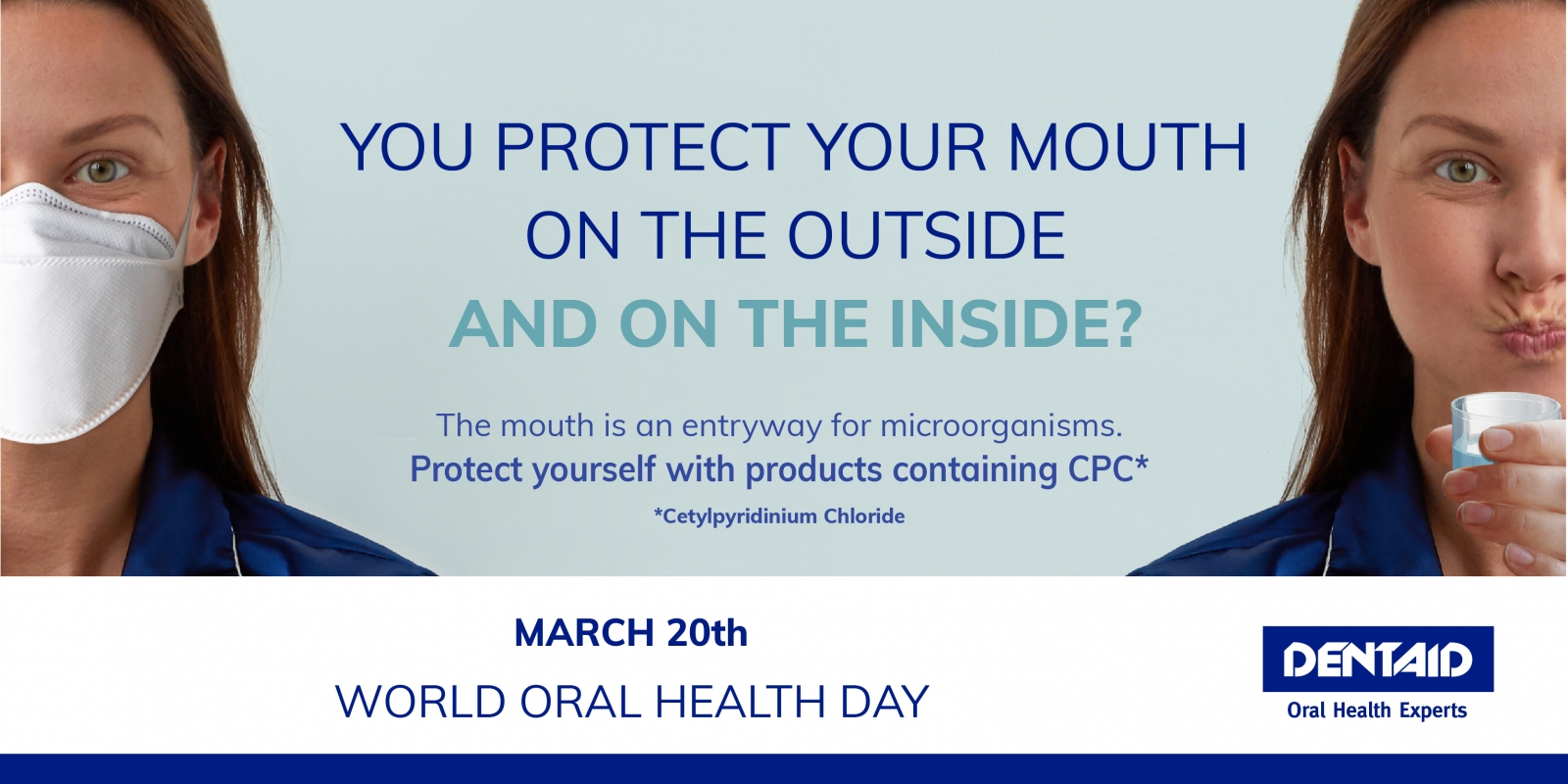DENTAID EXPERTISE
News for dentistry professionals
ORAL HEALTH AND QUALITY OF LIFE: A VERY CLOSE RELATIONSHIP

A multitude of studies have shown the negative impact of various oral pathologies on people’s physical and emotional well-being. That is why it is important for dental professionals to bear in mind that they can contribute to increasing the quality of life of their patients by helping them improve their oral health.
A person’s quality of life is a very broad concept and covers many aspects concerning well-being. One of the most relevant is the quality of life that has to do with the person’s health and how disease, disorders and disabilities can affect that well-being.
It is likewise acknowledged that within general health, oral health is key, and can therefore have a considerable impact on people’s quality of life.
The objectification of the concept of quality of life associated with health has sparked the creation of specific instruments related to each disease and its particular impact on peoples’ lives. One of the most commonly applied in the field of oral health is the Oral Hygiene Impact Profile or OHIP.
The most frequently used version of the OHIP consists of 14 questions that cover the 7 most relevant domains regarding the effect that deterioration of oral health can produce: functional limitation, physical pain, psychological unease, physical disability, psychological disability, social disability and disability in general.
The possible responses are: never (0), hardly ever (1), occasionally (2), often (3) and very often (4).
To get the score, the values are added together for a minimum of 0 points and a maximum of 56 points for each patient. Low scores thus indicate a better self-perceived quality of life, while high scores denote poorer self-perception of quality of life.
This questionnaire has been validated in many studies and the results obtained give data that show the relationship between the deterioration of oral health and high scores in the questionnaire, which indicates a diminishing perception of quality of life.
It is important to highlight that there are factors such as age, sex and cultural and socio-demographic factors that may influence the self-perception of quality of life negatively. For example, it has been observed that women tend to have a worse perception of their own quality of life. Likewise, as age advances, this also affects this self-perception.
RELATIONSHIP BETWEEN ORAL/DENTAL PATHOLOGIES AND QUALITY OF LIFE
Periodontitis
Periodontitis is a chronic inflammatory disease of infectious and non-communicable origin which may lead to many physical, functional, aesthetic, psychological and social limitations and disabilities as it grows in severity. All of these may be calibrated via the OHIP or similar questionnaires to assess the effect produced by the disease.
A recent systematic review on the impact of periodontitis on quality of life analysed 34 studies involving patients with periodontal disease at different stages through the different factors listed in the questionnaires on the quality of life relating to oral health. The results indicate that, in effect, the greater the severity of the periodontitis, the poorer the quality of life of those interviewed.
We therefore face a challenge of enormous importance, since the prevalence of moderate and severe periodontitis in old age is very high (around 50%), and thus if added to other diseases that one might suffer from in old age, quality of life may be greatly compromised.
Thus, prevention of periodontitis over the years, which is relatively simple, is of enormous importance and can mean considerable improvement in the quality of life of people, especially in this later and increasingly longer stage of life.
Caries
Tooth decay is, after the common cold, the most common infection in humans, and its implications on oral health are obvious. In a study carried out in Spain to assess the OHIP-14 questionnaire, it was observed that both the number of decayed teeth in need of extraction and those in need of endodontics and with visible caries represent a serious effect on the quality of life in its physical, social and psychological facets.
Likewise, both partial and total loss of teeth produce a very negative impact on the quality of life of a person. One study independently observed that the lower the number of teeth, the higher the risk of cardiovascular disease, diabetes and mortality from any cause in general, so doctors should register this as an additional health indicator. As per this conclusion, it can be said that saving teeth lengthens life.
Pathologies of the oral mucosa
Diseases of the oral mucosa, such as recurrent aphthous stomatitis, lichen planus and burning mouth syndrome, among others, have also been shown to have a very negative impact on quality of life. A study conducted in China showed that the scores obtained on the OHIP-14 were much higher for patients suffering from these diseases and/or disorders.
Malocclusion
Another subject on which countless studies have been carried out is malocclusion and the need for orthodontic treatment for quality of life. A systematic review with a recent meta-analysis concluded that patients with malocclusion treated with orthodontics or those without need for treatment had lower scores on the OHIP-14, thus demonstrating a better perception of their quality of life associated with oral health.
Tooth loss
Concerning loss of teeth, the use of dental prostheses to replace them usually has a very positive effect on quality of life, as many studies show. In addition, according to a recent systematic review, if the tooth replacement is performed through implant-supported prostheses, the OHIP-14 scores are further reduced.
CONCLUSION
It can be concluded that as oral health professionals we can increase the quality of life of our patients by helping them to improve their oral health. If we can also transfer all these improvements to patient diagnosis, treatment and expectations within the dental clinic setting, questionnaires on quality of life associated with oral health can be a very efficient tool in our day to day work.
About the Author
Periodontist and Medical Advisor at DENTAID
Bibliography
- Ferreira MC, Dias-Pereira AC, Branco-de-Almeida LS, Martins CC, Paiva SM. Impact of periodontal disease on quality of life: a systematic review. J Periodont Res 2017; 52: 651-665.
- Montero-Martín J, Bravo-Pérez M, Albaladejo-Martínez A, Hernández-Martín LA, Rosel-Gallardo EM. Validation the Oral Health Impact Profile (OHIP-14sp) for adults in Spain. Med Oral Patol Oral Cir Bucal 2009; 14 (1): E44-50.
- Liljestrand JM, Havulinna AS, Paju S, Mannisto S, Salomaa V, Pussinen PJ. Missing teeth predict incident cardiovascu-lar events, diabetes, and death. J Dent Res 2015; 94: 1.055-1.062.
- Liu LJ, Xiao W, He QB, Jiang WW. Generic and oral quality of life is affected by oral mucosal diseases. BMC Oral Health 2012; 12:2.
- Andiappan M, Gao W, Bernabé E, Kandala NB, Donaldson AN. Malocclusion, orthodontic treatment, and the Oral Health Impact Profile (OHIP-14): Systematic review and meta-analysis. Angle Orthod 2015; 85 (3): 493-500.
- Sivaramakrishnan G, Sridharan K. Comparison of implant supported mandibular overdentures and conventional den-tures on quality of life: a systematic review and meta-analysis of randomized controlled studies. Aust Dent J 2016; 61 (4): 482-488.
RELATED ARTICLES

14 Dec 2021
A recent study shows the efficacy of mouthwashes containing CPC in patients with COVID-19
Investigators from the Aragonese Health Service and the Health Research Institute of Aragon conducted a clinical trial in Primary Care with the aim of…

18 Nov 2021
Laboratory studies prove that CPC in mouthwashes is effective against different variants of SARS-CoV-2 thanks to its mechanism of action
INTRODUCTION The oral cavity is a route of entry, infection and transmission of microorganisms, including the SARS-CoV-2 coronavirus. Several…

16 Mar 2021
World Oral Health Day: What role does the oral cavity play during SARS-CoV-2 infection?
At DENTAID, we want to highlight the important role that oral health plays. Coinciding with World Oral Health Day, we have launched an awareness…
Sign up for the DENTAID Expertise newsletter
Sign up for the newsletter